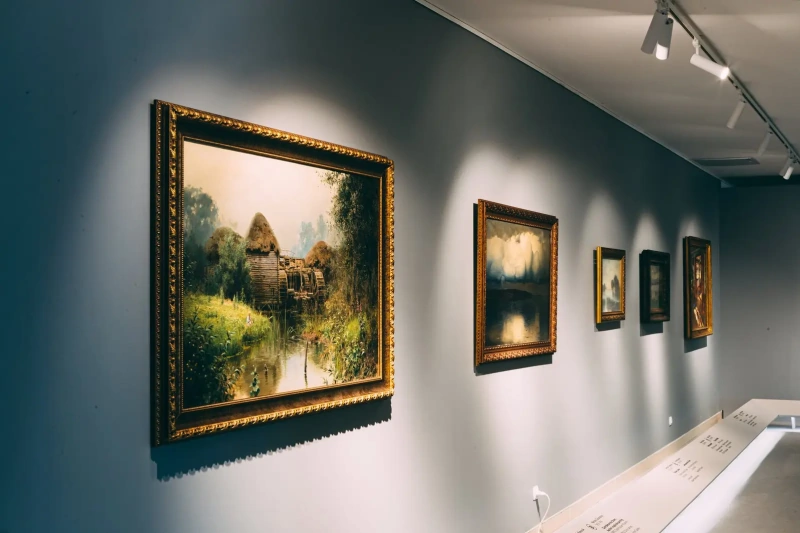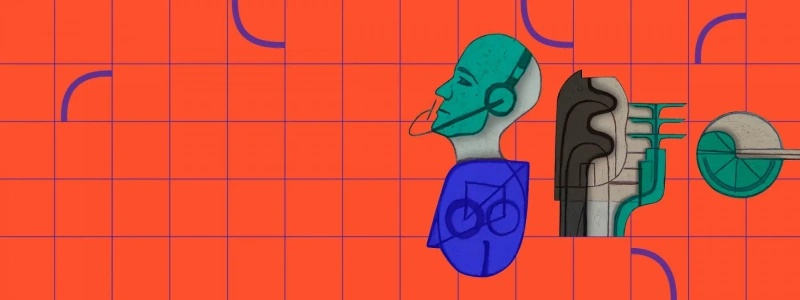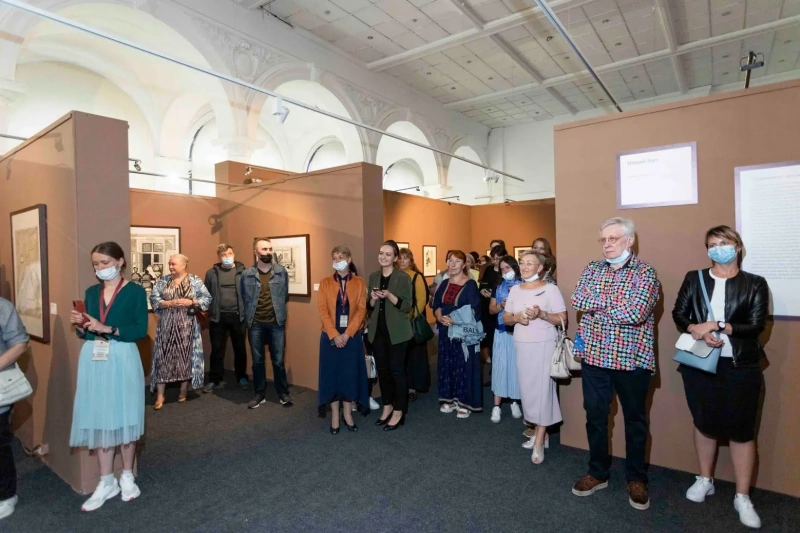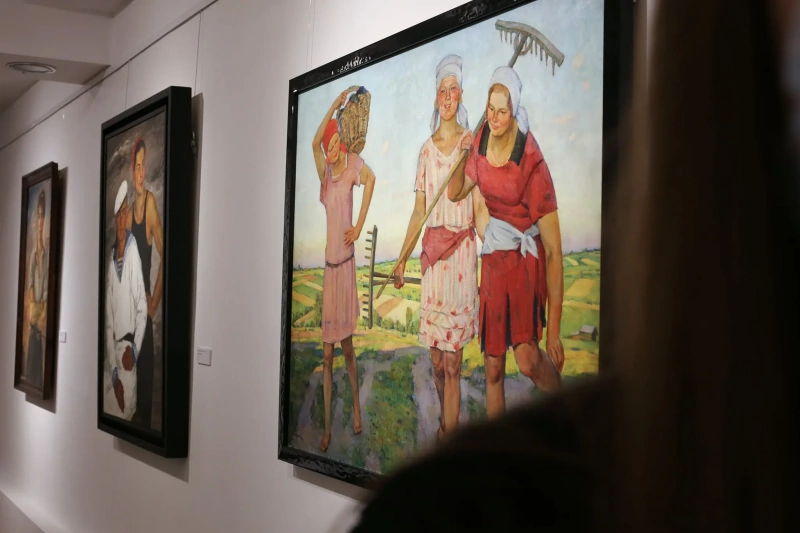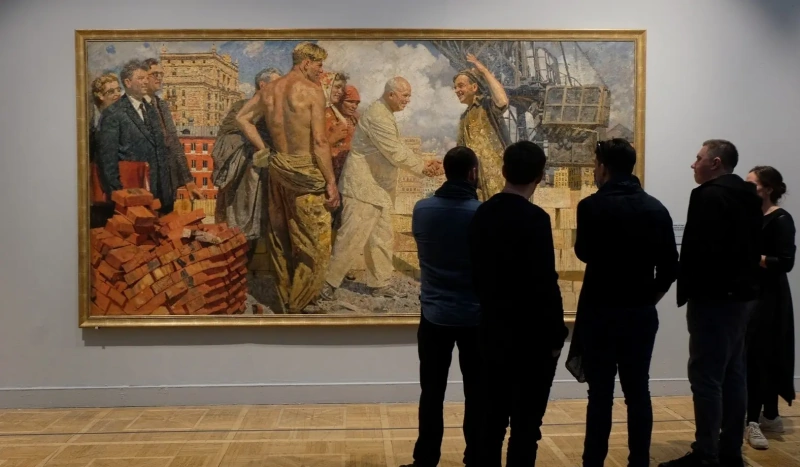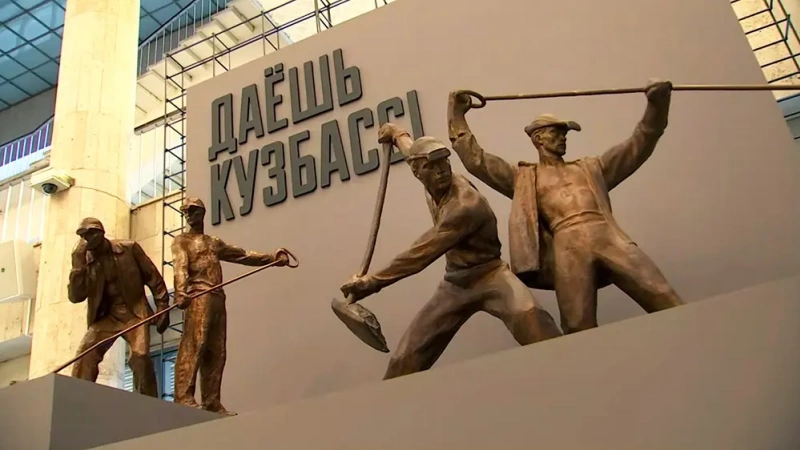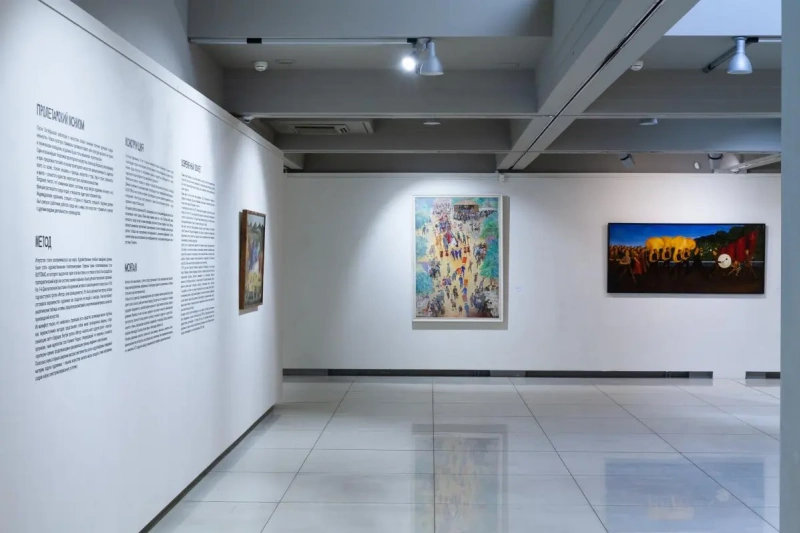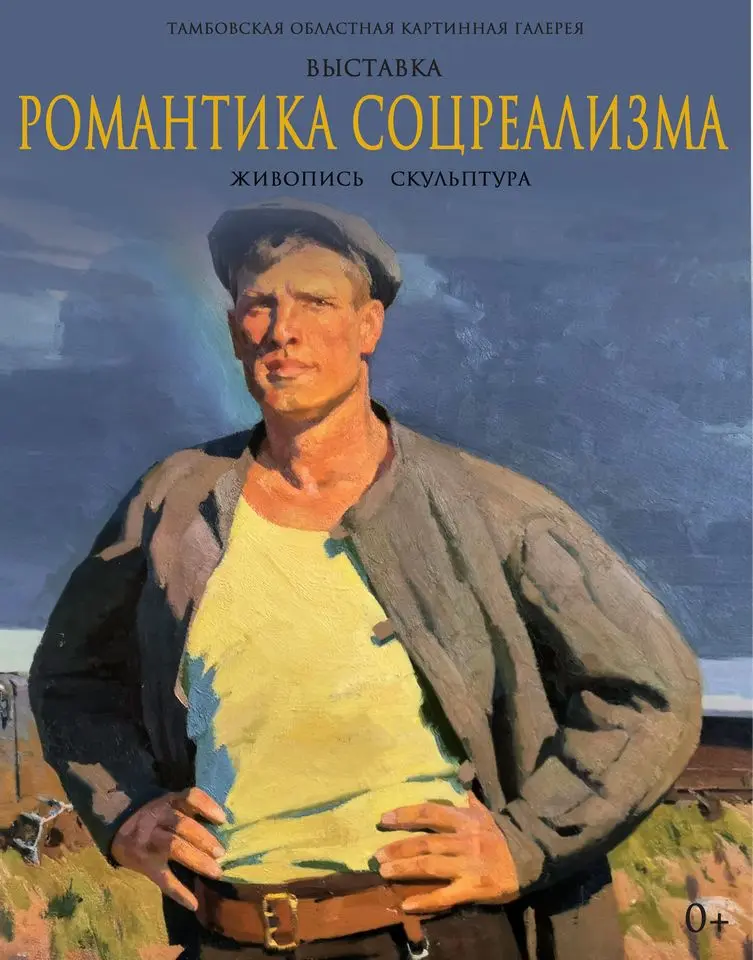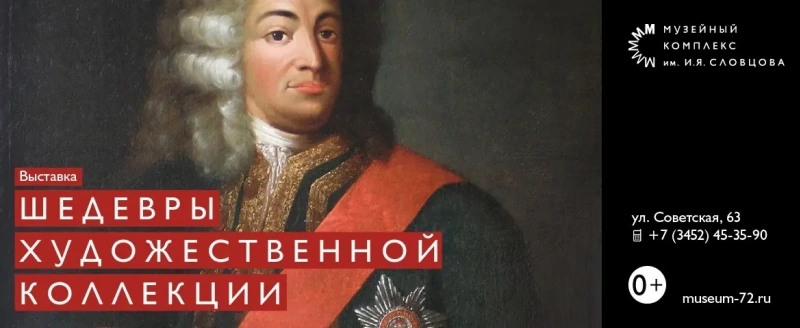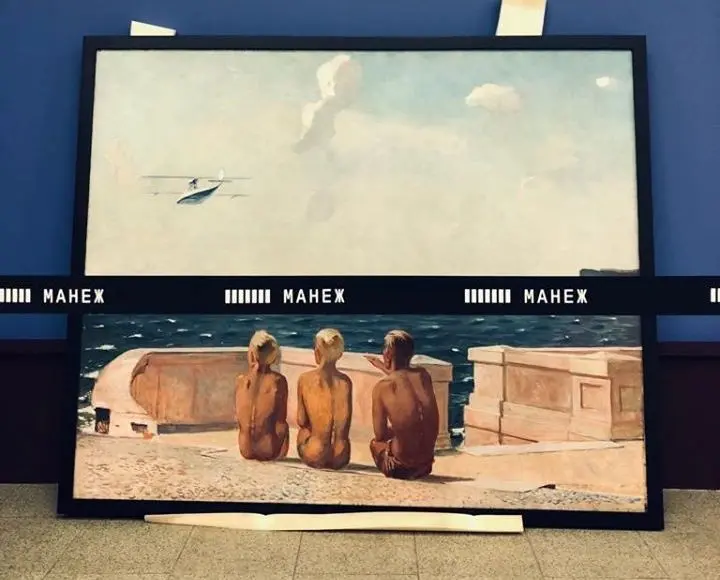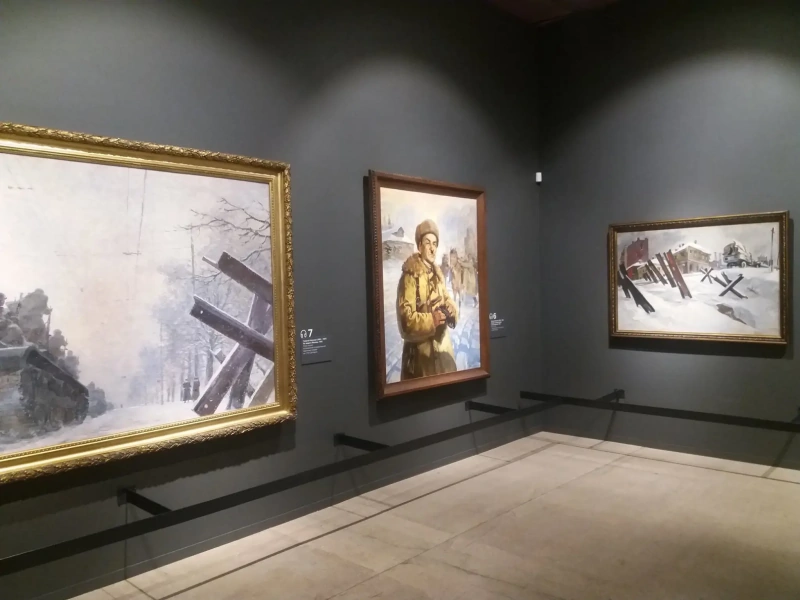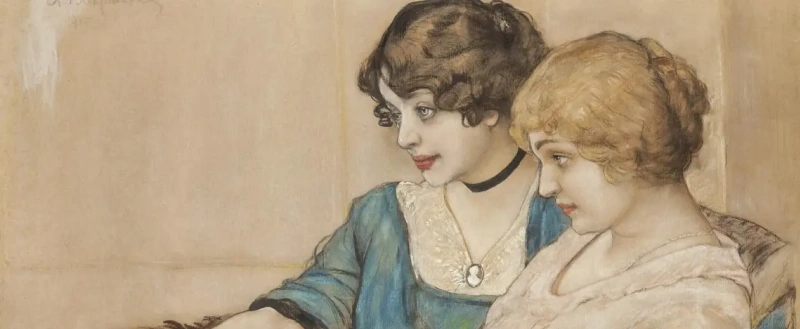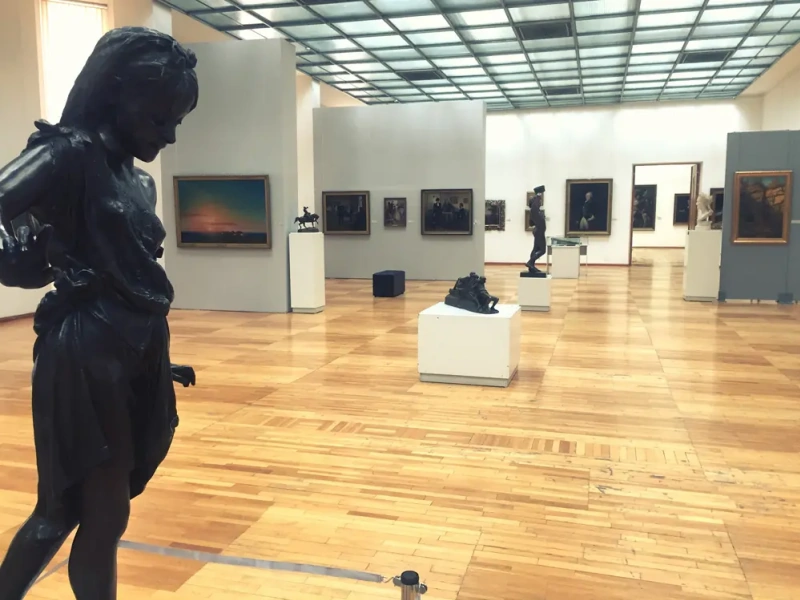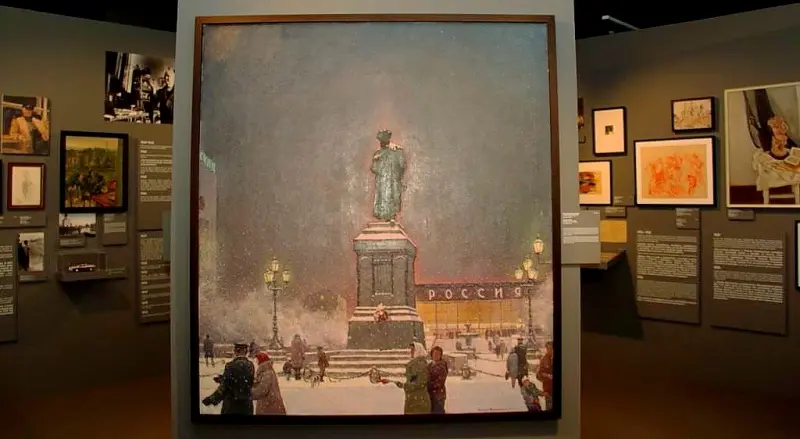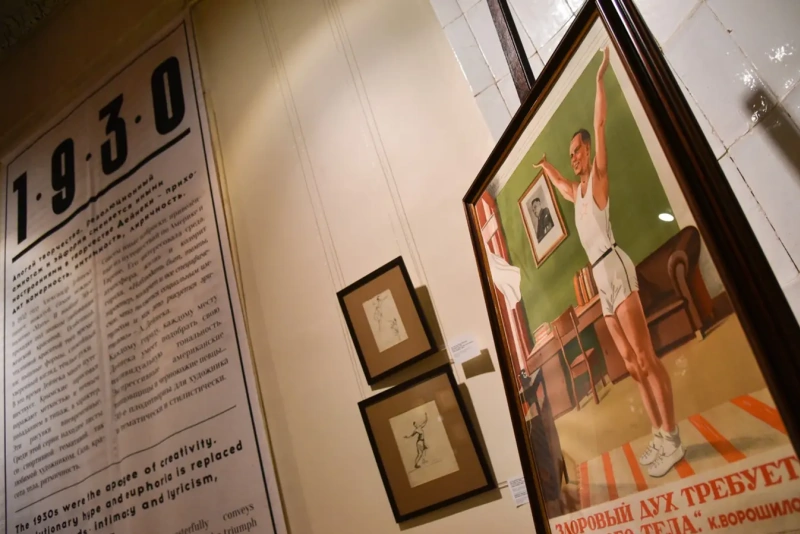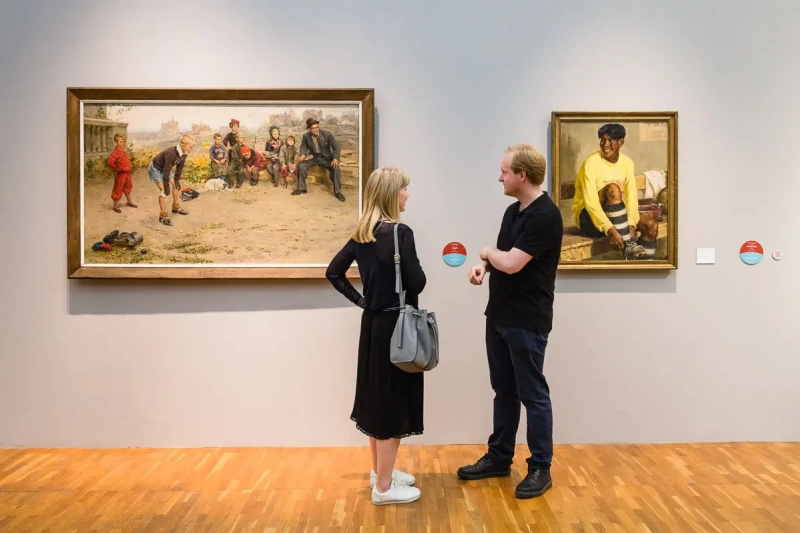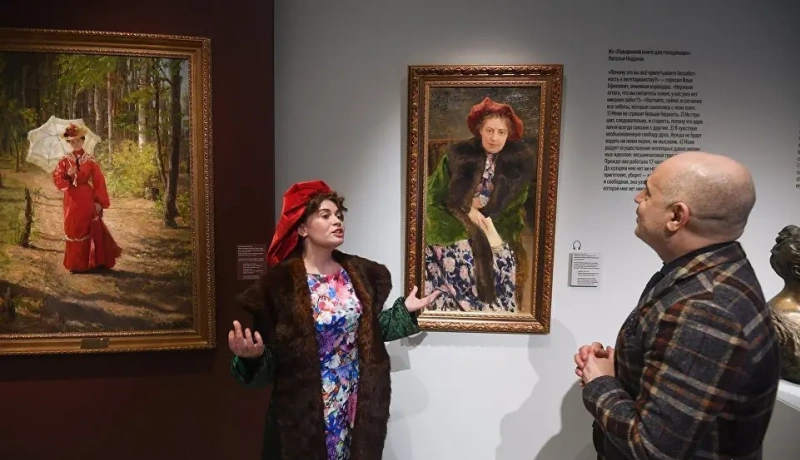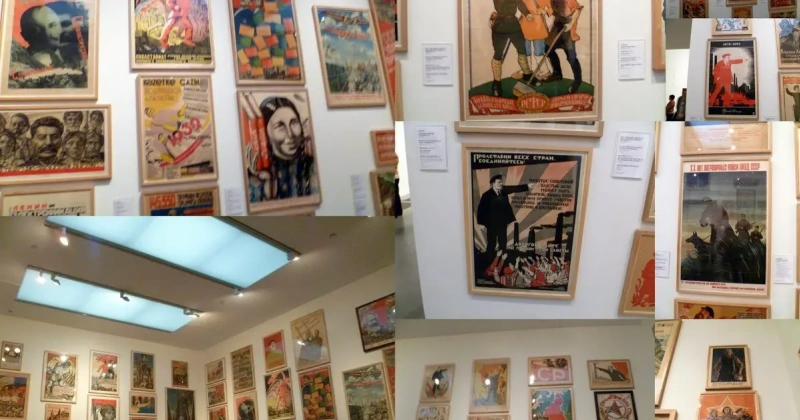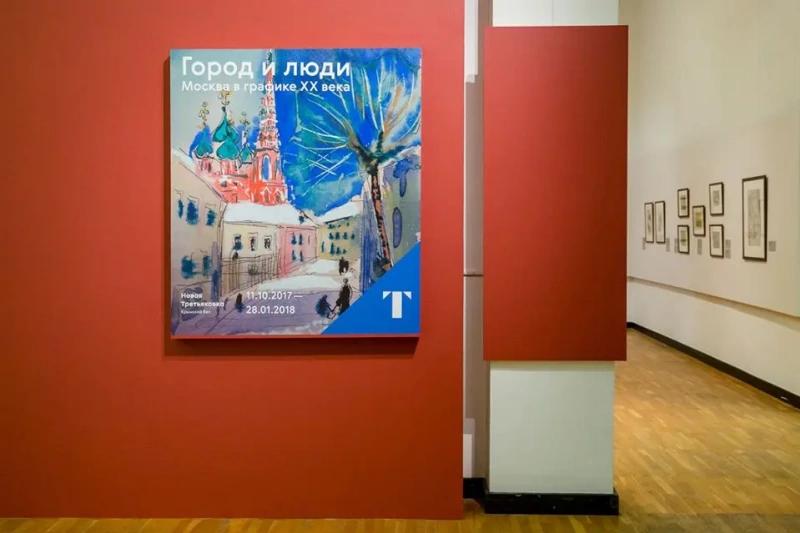log in
Enter site
Login to use Arthive functionality to the maximum
Alexander Alexandrovich Deineka (May 8 (20), 1899, Kursk - June 12, 1969, Moscow) - artist, known primarily as the creator of the cycle of works about happy Soviet people involved in sports and joyfully working in factories, plants and mines. But Deineka is not that simple. After all, to all this, he is also an artist, who in this 21st century is called a modern-day modernist.
Features of the artist Alexander Deineka: posterity, monumentality; synthesis of genres (poster, graphics, easel paintings, monumental paintings), sometimes in one piece; joyful, optimistic image of the Soviet reality; enthusiasm for the topic of sport, the image of strong, sporting Soviet people, competitions, relay races; expression of power, energy, power in any work; asexuality of models, lack of individuality portrayed, typing.
Famous paintings by Alexander Deineka: "Downed ace", "Future pilots", "Defense of Sevastopol".
Most often, Alexander Deineke is spoken of as the creator of the image of a "happy Soviet person." Meanwhile, this is not the whole Deineka. No, no, we will not write it to dissidents, they were not Deineka. And who was so leader. He was vital to scale, space, recognition. The phenomenon of “writing to the table” did not exist for him. Deineka certainly wanted to be successful, but to create something for the sake of the process itself is not about him. He sincerely believed in the Soviet system, fervently accepted the revolution, was confident in the happiness of all these sports men and women running in races, going down to the mines, pulling up to the top loaded carts, building airplanes and flying on them.
Biography of Alexander Deineka: childhood and adolescence To understand or at least try to understand the work of the artist Alexander Deineka, you will have to part with stereotypes, according to which he is only an ideologist of Soviet reality and a poster artist. The reason to doubt the usual look at Deineka arises already in the study of biography. For example, information that he was born in the family of railway workers, and his father was semi-literate, and his mother - an ordinary worker, some art historians report with a reservation "according to the official version." And it is believed that his motherin portraits and photographs, of course, the noblewoman does not seem, but it is very likely that she was not so “simple-simple” and uneducated, as Deineka himself stated, in order to give proletarian perfection to her origin. In the column "education" we bring the Ekimenko-Zabuga Art School in Kursk and the Kharkov Art School. Young Alexander took the revolution enthusiastically and even quickly made a career. Already in 1918, he worked as a photographer in the criminal wanted list of Kursk, and at the age of 21 he headed the section of the Fine Arts from Narobraz. Deineka was engaged in the design of theaters, performances and agitation trains. Two years he served in the Red Army.
Understanding perfectly well that he lacks education, he gladly accepted the direction from the army to VHUTEMAS (Higher Art and Technical Workshops) where he studied at Ignatius Nivinskyand Vladimir Favorsky. Then he met Mayakovsky, whom he had long admired. Sometimes Deineku called "Mayakovsky in painting." He recognized that he learned precisely laconicism and clarity from the poet and argued that “Composition is the cleansing of the plot of everything superfluous”.
New trends and groups were born almost daily, in many of them Deineka "was and was attracted." WITH Pimenovand Goncharovorganized the "Group of Three". Having left her, he joined the OST, the society of easel artists who tried to combine European innovative trends with Soviet reality. But easel paintings were not at Deineka in the first place, especially in those years. Magazine graphics and posters interested him much more, so he soon left this community and became part of the “October Revolution” - also not for long. There was also RAPH (Russian Association of Proletarian Artists), Deineka did not stay there either. Maybe the fact is that the singer of collective Soviet happiness was a great individualist?
He fruitfully collaborated with magazines, among which "Godless at the machine", "Give". Actively engaged in poster painting (1, 2). By the way, researchers who are negatively attributed to Deineke claim that he was the only one who was engaged in it ...
The most fruitful period in the works of Deineka The components of well-being for Deineka looked like this: scale, success, big pictures. The 30s in this sense were successful. He finally got the opportunity to turn around in spatial terms: he designed the kitchen factory in Fili, later created a decorative panel for the Red Army Theater, designed the Mayakovskaya metro station. This decade included trips to the Donbass and the Crimea, and an overseas tour of Europe and the USA, from which he brought magnificent drawings, sketches and paintings. By the way, not all of them are imbued with the spirit of exposing the "rotting bourgeoisie." He brought from the trip exquisite Parisians (1, 3), gorgeous roman monks, beautiful landscapes.
The artist Alexander Deineka had everything that the Soviet government could caress, while he was also appreciated abroad: in 1937 he received a gold medal at the Paris World Exhibition, two years later, for mosaics for Mayakovskaya station, he took the Grand Prix at New York International Exhibition.
The war and post-war years of Alexander Deineka The terrible time of the Second World War opened up a new facet of the talent of the artist Deineka. In the pictures of military Moscow, he acts as a lyricist, with painful bitterness, showing the cities in distress. And, of course, writes the legendary “Defense of Sevastopol” - an epic canvas.
The postwar years were a difficult period for Deineka. The atmosphere is getting thicker; reproaches of modernism and “lack of understanding of the tasks of the party” also do not give inspiration. There are among his works of this period that he clearly in a hurry to prove his trustworthiness. However, the case did not reach opals, in general, Deineka’s biography went according to a prosperous scenario, but, for example, I had to leave the post of head of the Moscow Institute of Decorative and Applied Art.
Another Deineka Another Deineka little studied, but he no doubt there. The artist Deineka is not “about politics”, it is, first of all, a powerful charge of energy, it is a power, a celebration of life. His athletic, toned-up, strong young men and women are forced to recall the ancient heroes, Ancient Greece with its cult of the body. In the pictures of Alexander Deineka, this body is not aristocratic, but proletarian, not pampered, but tempered in labor. But, like the Hellenes, is immortal. Here are just the immortality of Deineka's heroes of a special kind. He is often blamed for his “happy Soviet” lack of individuality. Indeed, in most of these paintings sportswomen-komsomolki-beautieslike workers or competing men next to them, devoid of individual traits. The remark is largely fair (although there are exceptions), but, first, let's not forget that in the Country of Soviets the role of the individual was reduced to a “screw and screw”, and secondly, here lies the clue to the immortality of Deineka's heroes. It is not in the infinite increase in the individual human life, and certainly not in the divine origin of the characters, but in the interchangeability of these strong, healthy, strong bodies. Some contemporary art critics (for example, Natalya Alexandrova) believe that Deineka's work should be defined as modernism, a deeply personal art directed from person to person. "Another Deineka" wrote lyrical landscapes (series "Dry leaves"), not "Soviet socialist" nude models, godlike fishermenand painted Soviet posters, which even now put on the cover of American magazines. Actually, in 1936 on the cover of the January issue of Vanity Fair adorned drawing Deineka. And wouldn’t these drawings beautify, for example, The New Yorker (1, 2, 3, 4)?
He, this completely reliable Soviet citizen and comrade, in the 30s wrote in a letter to his wife: "I see everything, I understand everything, but if it were not for you, I would put a bullet in my forehead". What is it about? What exactly did he see and understand? ..
His great Henri MatisseHe called the most talented of Soviet artists and "Gone forward in his artistic development". And really how could Matisse not likethese young men? And isn't the connection between them obvious or footballers Deinekaand legendary "Dance"Henri Matisse?
The enumeration of the titles and awards of the artist Alexander Deineka would constitute a whole registry: there is a Lenin Prize, a Hero of Socialist Labor, and a full member of the USSR Academy of Arts and so on. He was loved and favored by the authorities, he was reproached for modernism, he was a modernist, he was a Soviet artist, he was much more than a Soviet artist. Strength, energy, passion - phenomena that are relevant to any political system. Perhaps that is why the road to immortality, which Deineka laid for the heroes of his paintings and posters, was not interrupted along with the social system that gave rise to social realism.
Author: Alain Esaulova
Leer más
Features of the artist Alexander Deineka: posterity, monumentality; synthesis of genres (poster, graphics, easel paintings, monumental paintings), sometimes in one piece; joyful, optimistic image of the Soviet reality; enthusiasm for the topic of sport, the image of strong, sporting Soviet people, competitions, relay races; expression of power, energy, power in any work; asexuality of models, lack of individuality portrayed, typing.
Famous paintings by Alexander Deineka: "Downed ace", "Future pilots", "Defense of Sevastopol".
Most often, Alexander Deineke is spoken of as the creator of the image of a "happy Soviet person." Meanwhile, this is not the whole Deineka. No, no, we will not write it to dissidents, they were not Deineka. And who was so leader. He was vital to scale, space, recognition. The phenomenon of “writing to the table” did not exist for him. Deineka certainly wanted to be successful, but to create something for the sake of the process itself is not about him. He sincerely believed in the Soviet system, fervently accepted the revolution, was confident in the happiness of all these sports men and women running in races, going down to the mines, pulling up to the top loaded carts, building airplanes and flying on them.
Biography of Alexander Deineka: childhood and adolescence To understand or at least try to understand the work of the artist Alexander Deineka, you will have to part with stereotypes, according to which he is only an ideologist of Soviet reality and a poster artist. The reason to doubt the usual look at Deineka arises already in the study of biography. For example, information that he was born in the family of railway workers, and his father was semi-literate, and his mother - an ordinary worker, some art historians report with a reservation "according to the official version." And it is believed that his motherin portraits and photographs, of course, the noblewoman does not seem, but it is very likely that she was not so “simple-simple” and uneducated, as Deineka himself stated, in order to give proletarian perfection to her origin. In the column "education" we bring the Ekimenko-Zabuga Art School in Kursk and the Kharkov Art School. Young Alexander took the revolution enthusiastically and even quickly made a career. Already in 1918, he worked as a photographer in the criminal wanted list of Kursk, and at the age of 21 he headed the section of the Fine Arts from Narobraz. Deineka was engaged in the design of theaters, performances and agitation trains. Two years he served in the Red Army.
Understanding perfectly well that he lacks education, he gladly accepted the direction from the army to VHUTEMAS (Higher Art and Technical Workshops) where he studied at Ignatius Nivinskyand Vladimir Favorsky. Then he met Mayakovsky, whom he had long admired. Sometimes Deineku called "Mayakovsky in painting." He recognized that he learned precisely laconicism and clarity from the poet and argued that “Composition is the cleansing of the plot of everything superfluous”.
New trends and groups were born almost daily, in many of them Deineka "was and was attracted." WITH Pimenovand Goncharovorganized the "Group of Three". Having left her, he joined the OST, the society of easel artists who tried to combine European innovative trends with Soviet reality. But easel paintings were not at Deineka in the first place, especially in those years. Magazine graphics and posters interested him much more, so he soon left this community and became part of the “October Revolution” - also not for long. There was also RAPH (Russian Association of Proletarian Artists), Deineka did not stay there either. Maybe the fact is that the singer of collective Soviet happiness was a great individualist?
He fruitfully collaborated with magazines, among which "Godless at the machine", "Give". Actively engaged in poster painting (1, 2). By the way, researchers who are negatively attributed to Deineke claim that he was the only one who was engaged in it ...
The most fruitful period in the works of Deineka The components of well-being for Deineka looked like this: scale, success, big pictures. The 30s in this sense were successful. He finally got the opportunity to turn around in spatial terms: he designed the kitchen factory in Fili, later created a decorative panel for the Red Army Theater, designed the Mayakovskaya metro station. This decade included trips to the Donbass and the Crimea, and an overseas tour of Europe and the USA, from which he brought magnificent drawings, sketches and paintings. By the way, not all of them are imbued with the spirit of exposing the "rotting bourgeoisie." He brought from the trip exquisite Parisians (1, 3), gorgeous roman monks, beautiful landscapes.
The artist Alexander Deineka had everything that the Soviet government could caress, while he was also appreciated abroad: in 1937 he received a gold medal at the Paris World Exhibition, two years later, for mosaics for Mayakovskaya station, he took the Grand Prix at New York International Exhibition.
The war and post-war years of Alexander Deineka The terrible time of the Second World War opened up a new facet of the talent of the artist Deineka. In the pictures of military Moscow, he acts as a lyricist, with painful bitterness, showing the cities in distress. And, of course, writes the legendary “Defense of Sevastopol” - an epic canvas.
The postwar years were a difficult period for Deineka. The atmosphere is getting thicker; reproaches of modernism and “lack of understanding of the tasks of the party” also do not give inspiration. There are among his works of this period that he clearly in a hurry to prove his trustworthiness. However, the case did not reach opals, in general, Deineka’s biography went according to a prosperous scenario, but, for example, I had to leave the post of head of the Moscow Institute of Decorative and Applied Art.
Another Deineka Another Deineka little studied, but he no doubt there. The artist Deineka is not “about politics”, it is, first of all, a powerful charge of energy, it is a power, a celebration of life. His athletic, toned-up, strong young men and women are forced to recall the ancient heroes, Ancient Greece with its cult of the body. In the pictures of Alexander Deineka, this body is not aristocratic, but proletarian, not pampered, but tempered in labor. But, like the Hellenes, is immortal. Here are just the immortality of Deineka's heroes of a special kind. He is often blamed for his “happy Soviet” lack of individuality. Indeed, in most of these paintings sportswomen-komsomolki-beautieslike workers or competing men next to them, devoid of individual traits. The remark is largely fair (although there are exceptions), but, first, let's not forget that in the Country of Soviets the role of the individual was reduced to a “screw and screw”, and secondly, here lies the clue to the immortality of Deineka's heroes. It is not in the infinite increase in the individual human life, and certainly not in the divine origin of the characters, but in the interchangeability of these strong, healthy, strong bodies. Some contemporary art critics (for example, Natalya Alexandrova) believe that Deineka's work should be defined as modernism, a deeply personal art directed from person to person. "Another Deineka" wrote lyrical landscapes (series "Dry leaves"), not "Soviet socialist" nude models, godlike fishermenand painted Soviet posters, which even now put on the cover of American magazines. Actually, in 1936 on the cover of the January issue of Vanity Fair adorned drawing Deineka. And wouldn’t these drawings beautify, for example, The New Yorker (1, 2, 3, 4)?
He, this completely reliable Soviet citizen and comrade, in the 30s wrote in a letter to his wife: "I see everything, I understand everything, but if it were not for you, I would put a bullet in my forehead". What is it about? What exactly did he see and understand? ..
His great Henri MatisseHe called the most talented of Soviet artists and "Gone forward in his artistic development". And really how could Matisse not likethese young men? And isn't the connection between them obvious or footballers Deinekaand legendary "Dance"Henri Matisse?
The enumeration of the titles and awards of the artist Alexander Deineka would constitute a whole registry: there is a Lenin Prize, a Hero of Socialist Labor, and a full member of the USSR Academy of Arts and so on. He was loved and favored by the authorities, he was reproached for modernism, he was a modernist, he was a Soviet artist, he was much more than a Soviet artist. Strength, energy, passion - phenomena that are relevant to any political system. Perhaps that is why the road to immortality, which Deineka laid for the heroes of his paintings and posters, was not interrupted along with the social system that gave rise to social realism.
Author: Alain Esaulova
-
Las obras han gustado406 users
- Artworks in 4 collections and 400 selections
Publication
Exhibitions
All exhibitions of the artist
The Coal Miner
1925, 171.5×59 cm

Goalkeeper
1934, 119×352 cm

The activities lady ("Work, build and not whine!")
1933, 100×74 cm

Future pilots
1938, 131×161 cm

The day
1949

Two classes. Sketch for the painting of the VSHV
1939, 59×79 cm

Expanse
1944, 204×300 cm

Defense of Sevastopol
1942, 200×400 cm

Ball game
1932, 123×123 cm

Textile workers
1927, 171×195 cm
Feed
The ABC of a Masterpieceexhibition finished

December 18, 2021 − June 19, 2022 Historical-architectural and art Museum "New Jerusalem", Novo-Ierusalimskaya Embankment, 1, Istra
The ABC of a Masterpieceexhibition added

December 18, 2021 − June 19, 2022 Historical-architectural and art Museum "New Jerusalem", Novo-Ierusalimskaya Embankment, 1, Istra





